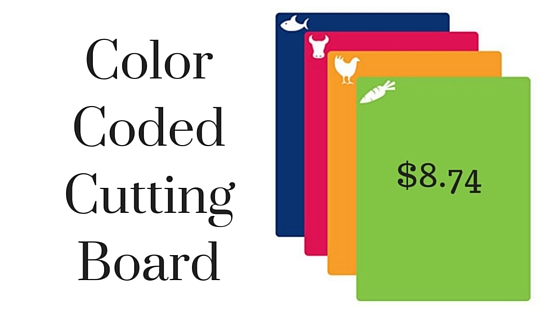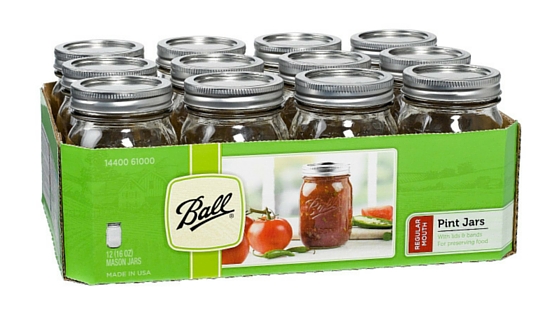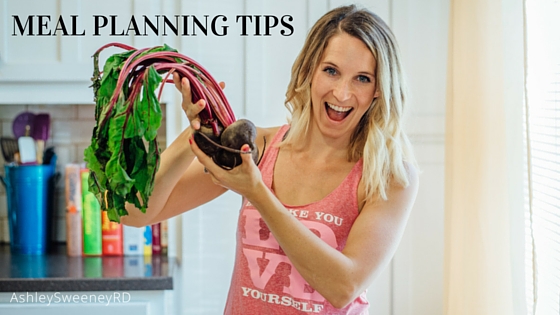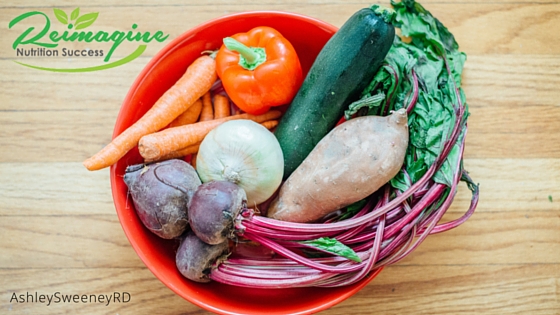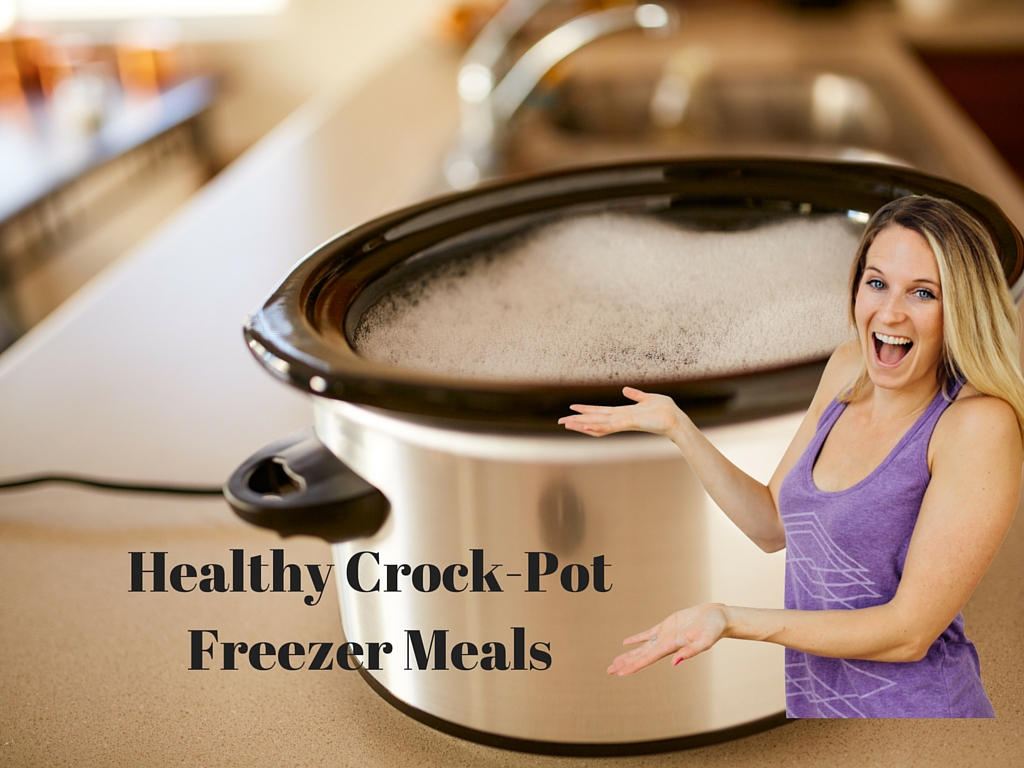Meal Planning, Meal Prepping, Freezer Meals & Crock Pot Tips!
My hope is that these tips can get you started meal planning in advance. It doesn’t have to be a whole day event meal planning, take things in baby steps. This article provides you with 61 tips from start to finish to meal planning & prepping in advance. Let’s start with a little food safety…
Cleaning & Keeping Your Family Safe
Washing
- Make sure hands, containers and surfaces are well washed.
- Wet hands thoroughly with warm water and add soap. Thoroughly scrub hands, wrists, fingernails, and in between fingers — for at least 20 seconds. Rinse, then dry hands with a clean cloth towel or use a paper towel so the germs are thrown away.
- Wash dishes, cutting boards, utensils with hot soapy water after preparing each food item.
- Use paper towels to clean kitchen surface, then throw the germs away.
- It’s important to sanitize your kitchen countertops periodically. You can use one teaspoon of liquid chlorine bleach per quart of clean water to sanitize surfaces. Leave solution on surface for about 10 minutes to be effective.
- Sponges only spread germs along the countertop. To kill the germs, wet your sponge lightly and then microwave for 2 minutes.
- Make sure to use disinfectant spray on the kitchen doorknobs, faucet handles and door handles often.
- Replace dishrags at least once a week. Wash in hot water and dry on high heat.
Food Safety
- Improper food safety, can result in serious illness and even death. This is most likely to occur in children under the age of 5, elderly over 65, pregnant women and those with weakened immune systems. This should not be taken lightly and is very important when dealing with your meal prep and meal planning. Learn more about foodborne illnesses here.
- Avoid cross contamination. Raw meat, poultry and seafood should be stored and prepared separately. When shopping, place raw foods inside plastic grocery bags to contain any juices. Store these foods in the refrigerator sealed in plastic bags or containers and keep at the bottom of the fridge to prevent leaks on other foods
- Clean your hands, cutting boards, dishes and utensils after dealing with raw meats AND unwashed produce.
- Do not use the same plate that you had raw meat on to serve or transport the cooked meat.
Thawing
- While you’ve probably done it yourself or have seen a relative thaw meat in hot water or on the countertop, it is actually very dangerous to prepare meat this way and can lead to foodborne illness.
- Raw meat, poultry or eggs should be kept at a safe temperature when thawing. Once items begin thawing and become warmer than 40 °F, bacteria that were present before freezing can begin to multiply.
- Never leave meat on the countertops or in hot water. Do not leave raw meats at room temperature for more than 2 hours.
- When thawing frozen food, it’s best to plan ahead and thaw in the refrigerator where it will remain at a safe, constant temperature — at 40 °F or below.
- You can thaw foods in cold running water or submerge the meat in plastic bags in cold water.
- If you microwave to de-thaw, food must be cooked immediately after it is thawed.
Canned Foods
- Do not buy canned foods that are damaged, dented or open.
- Wash top of canned foods before opening with hot soapy water.
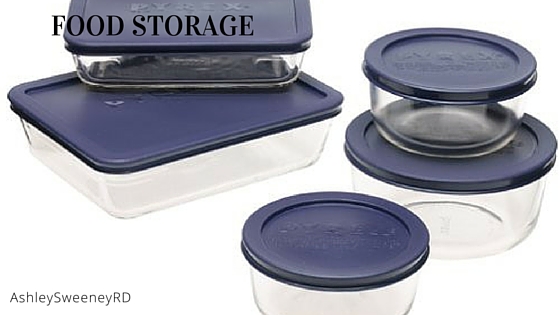
Meal Planning & Meal Prep Containers & Storage Items
- The following is a list of utensils, items and containers that are best for your meal prep and meal planning. It’s important that as you are planning in advance, you have enough storage containers for your food!
- Freezer storage bags (these are different (stronger) than normal zip lock baggies) in different sizes.
- BPA free tuberware or glass containers in a variety of sizes.
- Large casserole dishes with air tight container lids. I love the pyrex glass containers with the blue lids.
- Plastic wrap.
- Aluminum foil cooking dishes (for lasagna, casseroles, etc).
- Aluminum foil.
- Proper cleaning supplies.
- Cutting boards.
- Quality knives.
- Vegetable peeler.
- Food processor (blender will work also).
- Mason Jars
Freezer Meals
It’s important to understand how to properly freeze your meals.
- Lower temperature before refrigeration. If you put foods that are too hot into your fridge, you lower the temperature of the refrigerator, temporarily causing your fridge to produce more energy to return to its regular temperature.
- Place foods in a large shallow container to help cool to room temperature. Place on a cooling rack.
- Refrigerate before storing in the freezer to lower temperature.
- Use freezer bags for freezer storage. They are thicker than storage
bags and keep foods fresh longer. - Freeze in a thin, flattened shape in freezer bag. Flatter storage bags will stack better.
- To freeze casseroles or lasagna, you can save your glass casserole containers by using disposable aluminum foil cooking pans. Cover with aluminum foil and place on a cookie sheet to freeze.
- Avoid getting foods on the outside of the bag by using a funnel or wiping clean.
- Label foods with the name, date, number of servings and any helpful information or instructions you or your family may need.
- Don’t stack freezer bags until frozen thoroughly.
- When ready to thaw, thaw in the refrigerator, not on the counter top. You can also transfer contents to a microwave safe container and microwave as long as you plan on cooking right away. Some freezer bags are safe for thawing directly in the microwave, check the instructions on your freezer bags. You do not have the thaw the lasagnas and casseroles, cooking time will just be longer.
- Best Recipes for Freezer Meals
- Casseroles: Freeze the casserole before it has been baked.
- Stew, chili, soups: Let cool before freezing.
- Lasagna, ziti or baked pasta dishes: Prepare all ingredients and freeze it before it has been baked.
- Sauces: Homemade pasta sauce, pizza sauce, etc.
- The more you do your meal planning in advance, the easier it gets. Be consistent with making a meal plan a head of time. It will save you time, energy, stress, calories and money.
- Keep your shopping list next to your menu so you don’t forget anything.
- Plan around your schedule. Don’t plan on having an elaborate meal on nights you aren’t going to be home or have sports practices all night. Plan on having left overs or packing sandwiches for the road.
- If you are just starting out, don’t stress about planning 7 days a week from scratch. Start with 3 or 4 days and increase from there.
- If you tend to have a lot of left overs, make one day left over day.
- Try to make 2 main items at once. For example, make double the quinoa, rice, pasta, chicken, or meat on Monday to have for Tuesday’s dinner. For example, make grilled chicken followed by chicken enchiladas the next evening.
- Try planning themed dinner nights. This can be taco night, breakfast for dinner, pasta night, soup night, bean night, meatless Monday, etc. It helps with the planning but still allows for variety!
- Double recipes and freeze the second batch for future weeks.
- Save recipes and meal plans in a safe place. I like to keep mine on Evernote or Dropbox. I can open these on my computer or phone if needed. Once you have a collection of meal plans that your family approves of, you’ll have more options and variety.
- Check on sales and coupons for your stores before you do your meal planning for the week. Look for ways to save money before you plan your meals.
- Stock your pantry. Make sure you always have plenty of your staple spices, beans, grains, etc.
- Let your family get involved. What would they like to have on the menu? Maybe one kid a week gets to pick their choice of dinner. Can you tweak their favorites to be a little healthier?
45. Plan your meals around the protein & veggies.
46. Aim for at least one night a week to be vegetarian!
47. You should aim to have at least 5-6 servings of fruits and veggies per day. Not 5 fruits and 5 veggies, 5-6 combined. Aim for having more vegetables than fruit.
48. Lean proteins include chicken, lean beef, fish, seafood, pork, beans, lentils, eggs, etc.
Learn more about my Reimagine Nutrition Success Program at Reimagine Diet.com. We go deeper into meal planning where you’ll receive worksheets, examples, how to plan your weeks, tutorials and more.
Crockpot Tips
- Don’t overfill the crock pot. To make sure your meal is finished in the time listed on your recipe and to avoid potential food-safety hazards, don’t overfill your slow cooker. Most manufacturers recommend filling them no more than two-thirds full, but it differs among brands, so check your owner’s manual.
- Opening the slow cooker lets heat escape and slows cooking. Only open it 30 to 45 minutes before the low end of the cooking range to check doneness.
- Frozen meats can be cooked in a slow cooker, however, it is best to use the following guidelines: Add at least 1 cup of warm liquid to the stoneware before placing meat in the stoneware. Do not preheat the slow cooker. Cook recipes containing frozen meats for an additional 4 to 6 hours on low, or an additional 2 hours on high.
- There are appropriate meat weights for specific size slow cookers (Example: 6 quart = 6 pounds meat). Cut meat to cook at same rate as vegetables. For frozen meats, add liquid, use pre-cubed meat and add additional time to ensure meat is defrosted, fully cooked and tender
- You can cook frozen meat in a Crock-Pot Slow Cooker, but suggested cook time may need to be increased. To ensure meat is cooked through, use a meat thermometer. Meat should be well above 165°F to be tender.
- Some people prefer the convenience of not pre-browning meat before adding to the slow cooker. Pre-browning meat does create another layer of prep work. If you prefer to pre-brown meat, borwn or sear meats in a skillet, prior to adding to slow cooker. This will create greater depth of flavor to any dish as well as melt out fat that can be poured off before slow cooking.
- Place root vegetables near the sides or the bottom of the stoneware because they often cook slower than meat. Cut vegetables accordingly to cook at the same rate as the meat. For example, smaller cuts of vegetables for lean meat versus larger vegetables for marbled meat.
- Dried beans should be boiled before adding to a recipe, especially red kidney beans. Cover the beans with 3 times their volume of unsalted water and bring to a boil. Boil 10 minutes, reduce heat, cover and allow to simmer 1 1/2 hours or until beans are tender. Soaking in water, if desired, should be completed before boiling. Discard water after soaking or boiling.
- Pasta should be fully cooked and added during the last 30 minutes of cook time. If you are converting a recipe that calls for uncooked pasta, cook pasta on the stovetop before adding to the slow cooker.
- Use risotto or long-grain for best results. If rice doesn’t cook completely after suggested time, try adding an extra 1 – 1 2/3 cup of liquid per cup of rice.
- Care for your crock: The ceramic insert in a slow cooker can crack if exposed to abrupt temperature shifts. In other words, don’t place a hot ceramic insert directly on a cold counter; put down a dishtowel first. The same goes for using a filled insert you’ve stowed overnight in the refrigerator: Let it come to room temperature before putting it in a preheated base.
- Browning boosts flavor: You can certainly just pile food into the slow cooker, turn it on and get tasty results. But when you take a couple of minutes to brown your meat and saute your vegetables before adding them to the crock, you’re rewarded with an additional layer of deep, caramelized flavor. (This is doubly true with ground meat.) Want a thicker sauce? Dredge the meat in flour before browning.
- End on a fresh note: A sprinkle of fresh herbs or squeeze of lemon juice at the end of simmering can brighten flavors and cut through the richness of long-cooked recipes. Other excellent finishing touches: hot sauce, citrus zest, grated Parmesan, good-quality olive oil or even sauteed garlic.
References:
This page contains affiliate links. I share them because I personally use the products myself. By using the links I provide, it helps ensure my services stay low cost & free to my readers! You can read my full disclosure policy here.

